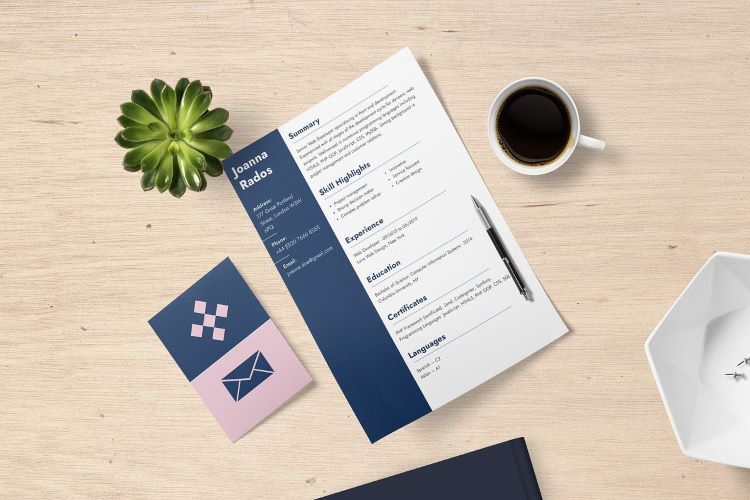
Writing a resume is an art form. Resume writing, like all art forms, is subjective. You can still make your resume appealing to hiring managers by following these guidelines. These 7 resume writing tips will help you make your resume stand out.
1. Start your resume with a clear focus
The hiring manager should quickly get to know your capabilities and profession. This can be done by placing the name of your profession underneath your name and street address. Then, follow it up with a skills summary. An executive summary could be written that starts with your profession and then describes your skills.
Even if you don’t have a job to list on your resume, it is still a good idea to write about your skills and put a strong focus on the job you are applying for. A generic objective on a resume is a common mistake. It is not necessary to have a generic objective for your resume.
2. Start phrases that include action verbs
Managed! Achieved! Sold! Launched! Launched! To accurately describe your accomplishments and skills, choose the most powerful and engaging verbs that you can find.
Compare action verbs with state-of being verbs to get an idea of how they can help you build your resume. These verbs lack the same zest as action verbs because they don’t reveal what you did. These state-of-being verbs should only be used when absolutely necessary. Don’t use them in conjunction with other phrases.
If repeated too often, even powerful verbs can become boring. However, you should not repeat them in the same paragraph or block of text. Boring action verbs that are repeated in more than three sentences can lead to boredom. If you do, mix up your sentence structure.
3. For each job or achievement, use the correct verb tense
Use past tense if you are referring to a job you have held in the past, or an achievement you’ve achieved. Use present tense if you are referring to a job that you hold currently or an achievement that you are working towards. Use present tense when writing about skills you have used in the past and will continue to use. It doesn’t have to sound awkward. You can use the past continuous tense such as “have sold more that 27 paintings …”” or something similar.
4. Make your resume simple to read
A resume should be simple with plenty of white space. Each section should not exceed 7 lines. You can add more lines to a section or paragraph if you have more. You can only read 7 lines in any of the sections you are currently reading.
Short, powerful sentences will impress more than long, rambling sentences. Reduce repetition and unnecessary information. Each phrase should be concise and direct. Commas are a great way to break down longer phrases into smaller chunks. Your resume should be free of pronouns like “I”.
A conservative font like Times New Roman is the best for resume writing. A font size of 11-12 points is recommended, though Verdana’s chunky font may allow for 10 points.
Make sure your resume has a wide border so that the text doesn’t appear cluttered.
5. Use uniform formatting
Parallelism and consistency are appealing, so adapt them for resume writing. If you highlight the years that you worked at one company in italics, you can do the same for every year you worked at each company. This applies to capitalization, bullet points and underlining as well.
6. Make hard copies of your resume and print them in style
Your resume writing does not end with the final draft. Make sure you make your resume look professional by printing hard copies. To prevent ink from running off your carefully-written words, use a laser printer if possible. Do not settle for less than the typeset that your competitors will use.
Choose from white, off-white or ivory paper. This background is an example of a suitable color. The paper should measure 8.5 by 11 inches. Avoid using smudged papers and do not staple your resume. You should only buy the best quality paper that you can afford. There is a big difference between standard printer papers and expensive papers.
Stone paper is a good example. It has a smooth texture that might make hiring managers want to keep it for longer. Stone paper is stronger than regular paper and can withstand water damage. Laser printers are not able to print on stone paper. You will need an inkjet printer or you could get a smeared look from using a solid ink printer.
Pure cotton paper has a luscious texture. It is more durable and stronger than regular paper. It is easy to print on cotton paper. A resume printed on 100% cotton paper such as Crane’s will last a lifetime with minimal or no deterioration. Senior-level resumes should be printed on Crane’s watermarked, rag paper.
7. Strategically present the information in your resume
Resume writing is all about presenting the truth in a professional manner. Your resume should be organized to highlight your best skills and experience. With the idea of your resume being an advertisement, decide where everything should go.
The most important information is found at the top of the page. English-speakers read from left to right so information on the left is most important. Italicized text recedes while bold text leaps out, while italicized text appears to jump out. White space will attract the eye faster than words in a block.
Remember to keep the viewer’s attention on the overall effect of the design elements and structure.
Let me end with a final thought about resume writing…
Your resume will reflect how you view resume writing. If you view resume writing as a chance to make a beautiful advertisement, then you’ll be proud of the end result.





